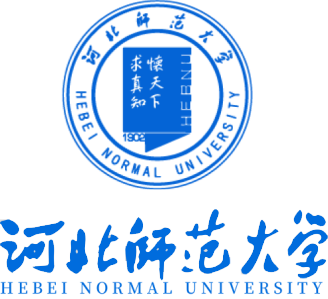-
10
2026/01
河北师范大学外国语学院首届校友论坛
为搭建校友深度交流合作平台,凝聚校友智慧力量,赋能学生成长成才,助力学科高质量发展,河北师范大学外国语学院将于2026年1月10日举办校友论坛。本次论坛特邀请高等教育领域专家、基础教育学科带头人、各学段教育名师等出席并作专题报告。海内外校友重返母校,与昔日师友共叙同窗情谊,共话外语教育发展新机遇,携手谱写外国语学院新篇章。
-
11
2026/01
新时代国家文化安全问题
新时代国家文化安全问题。
-
17
2026/01
文苑大讲堂2026年第1讲: “现汉学”的《现汉》立体研究空间 (周末专家河北行)
回顾“现汉学”20年前提出的学术背景及经历的发展过程,论述对《现汉》进行全方面研究的原则、架构、方法。词汇学研究、辞书学研究、话语体系研究构成了“现汉学”研究相互交叉、渗透,又相对独立的三大领域。《现汉》的丰富内容、完整编纂思想、持续而与时俱进的连续修订,为“现汉学”研究提供了极为宝贵的材料。
-
09
2026/01
河北师范大学科技大讲堂之院士论坛:不完美的理由—粒子世界的对称与破缺
对称性,不仅彰显着自然之美,更揭示了物理规律赖以建立的基础——从时空平移对称中导出的能量与动量守恒律,到决定基本相互作用形式的规范对称原理,无不展现出宇宙运行内在的高度和谐。然而,宇宙之所以丰富,生命之所以可能,却恰来自于对称性的微妙破缺。本报告将回溯现代物理学史上几个决定性的转折点:从1956年李政道与杨振宁提出“宇称不守恒”预言,经吴健雄以实验证实,这一发现彻底动摇了人们对自然界左右对称的固有认知;再到希格斯机制的提出与证实,揭示了物质的质量如何从对称性的自发破缺中诞生;直至今日,物质—反物质不对称之谜仍是驱动前沿探索的核心课题。正如同李政道先生所指出的:“对称决定宇宙之美,破缺生成宇宙之实。” 对“对称”与“破缺”的追问,不断将我们对物质世界的认识引向深入。
-
09
2026/01
2026年粒子物理理论与实验最新前沿问题研讨会
郑海扬(中国台湾中研院):Progress on charmed baryon decays蒋正伟(台湾大学):Application of machine learning in collider physics李龙科(湖南师范大学):Prospects of charm physics at Belle-II王玉明(南开大学):Precision calculations for heavy quark decays李新强(华中师范大学):Two-body non-leptonic Λb to Λc + L decays in QCD factorizationapproach鄢文标(中国科学技术大学):Fragmentation function at e+e- collisions沈宏飞(中国科学院高能物理所):Hyperon physics at BESIII王雅迪(华北电力大学):Baryon E&M form factors at BESIII黄光顺(中国科学技术大学):Probing hadron source geometry with Bose-Einstein correlations ine+e- collision刘北江(中国科学院高能物理所):北京谱仪III实验上轻奇特强子态研究进展郭奉坤(中国科学院理论物理所):Near-threshold structures安刘攀(北京大学):LHCb重味强子谱学孙亮(武汉大学):Rarecharm decays at BESIII and LHCb杨冀翀(辽宁师范大学): Using quantum machine learning in the phenomenological study of newphysics郭志辉(河北师范大学):Semi-leptonic tau decays柯百谦(郑州大学):Charmed meson decays at BESIII刘朝峰(中国科学院高能物理所):Leptonic charm decays with LQCD吕晓睿(中国科学院大学):Charmed baryon decays at BESIII and LHCb李海波(中国科学院高能物理所):会议总结
-
08
2026/01
Precise tests of General Relativity: recent progress with astrophysical observations
One century after its formulation, Einstein's general relativity (GR) has maderemarkable predictions and turned out to be compatible with all experimentaltests. However, the pursuit of testing gravity at a much higher precision hascontinued in recent decades, including measurements of the Earth–moonseparation as a function of time through lunar laser ranging. On the otherhand, formulating and quantitatively interpreting the test of gravity isanother question. This talk will introduce how to formulate and quantitativelyinterpret the tests of GR on extra-galactic scale, and discuss the advances inour understanding of fundamental physics with recent astrophysical observations
-
05
2026/01
Combinatorial Geometry of Point Sets (Ⅸ)
This lecture examines incidence problems of points andlines in the plane, focusing on the Sylvester-Gallai theorem and its proofs,alongside related results in combinatorial geometry.
-
06
2026/01
周末专家河北行:高层次社科基金的选题策略与申报技巧
本讲座将结合近年新闻传播学学科国家社科基金立项情况,围绕选题策略、申报技巧等展开阐述。
-
12
2026/01
周末专家河北行——车用永磁同步电机定转子综合冷却建模及优化
车用永磁同步电机结构;车用驱动电机冷却建模及优化
-
06
2026/01
时间分辨光谱在光电功能材料表征中的应用
主要介绍时间分辨荧光光谱技术、瞬态吸收光谱技术、时间分辨微波光电导技术、飞行时间测量载流子迁移率、瞬态表面光电压的主要测量原理,数据分析方法以及在Sb2Se3、FA0.95CS0.05PbI2.95Br0.05等材料表征中的具体应用。





